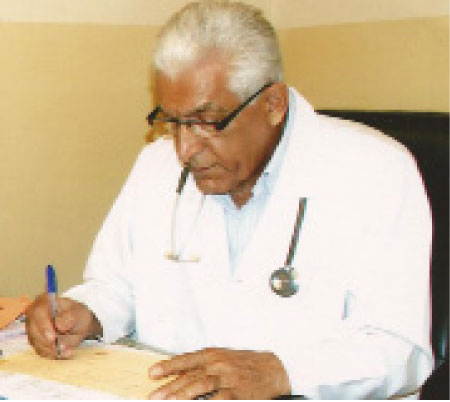
Cervical cancer is a cancer resigning from neck of the womb. It is due to the abnormal growth of cells that have the ability to invade or spread to other parts of the body. Early on there are typically no symptoms. Later symptoms may include: abnormal vaginal bleeding, pelvic pain or pain during sexual intercourse.
Cervical cancer occurs when abnormal cells on the cervixgrow out of control. The cervix is the lower part of the uterus that opens into the vagina. Cervical cancer can often be successfully treated when it’s found early. It is usually found at a very early stage through a Pap smear test.
Cervical cancer is one of the most common cancers in women worldwide. But in the United States and other countries where cervical cancer screening is routine, this cancer is not so common.
Most cervical cancer is caused by a virus called human papillomavarious, or HPV. You can get HPV by having sexual contact with someone who has it. There are many types of the HPV virus. Not all types of HPV cause cervical cancer. Some of them cause genital warts, but other types may not cause any symptoms.
Most adults have been infected with HPV at some time. An infection may go away on its own. But sometimes it can cause genital warts or lead to cervical cancer. That’s why it’s important for women to have regular Pap tests. A Pap test can find changes in cervical cells before they turn into cancer. If you treat these cell changes, you may prevent cervical cancer.
Abnormal cervical cell changes rarely cause symptoms. But you may have symptoms if those cell changes grow into cervical cancer. Symptoms of cervical cancer may include:
•Bleeding from the vagina that is not normal, such as bleeding between menstrual periods, after sex, or after menopause.
•Pain in the lower belly or pelvis.
•Pain during sex.
•Vaginal discharge that isn’t normal.
As part of your regular pelvic exam, you should have a Pap smear test. During a Pap test, the doctor scrapes a small sample of cells from the surface of the cervix to look for cell changes. If a Pap test shows abnormal cell changes, your doctor may do your doctor may also do a Pap test and take a sample of tissue (biopsy) if you have symptoms of cervical cancer, such as bleeding after sex.
Depending on how much the cancer has grown, you may have one or more treatments. And you may have a combination of treatments. If you have a hysterectomy (removal of the entire womb ) , you won’t be able to have children. But a hysterectomy isn’t always needed, especially when cancer is found very early.
Finding out that you have cancer can change your life. You may feel like your world has turned upside down and you have lost all control
Every 10 minutes, a woman dies in Africa from the cancerof the woman’s womb
It is actually a very true fact that every 10 minutes, a woman dies in Africa from cervical cancer (cancer of the neck of womb), identified significant number of cases here in The Gambia, incidence about 14% too, despite the fact that almost every case and I wish to emphasize almost every single case is preventable through a programmed of screening by been screened at least every two years.
The risk factors as in other cancer types, also cervical cancer, and the onset of disease can be prompted by specific risk factors. These may be Genetically, environmentally or the commonest, the high risks of vaginal washing so called vaginal douching with water, locally made soaps, very often local and different herbal herpes liquids, ditto and many other harmful products unfortunately sold in the various pharmacies.
Also some products recommended by friends and beauty salons, even use of several different perfumes to please the husbands.
I can confirm this harmful habit in my everyday’s clinics, possibly over up to 90%.
Using any of these motioned harmful products on God given a very natural and healthy tissues to every woman destroys the healthy and protective tissues and makes these area extremely vulnerable for developing millions of harmful bacteria, fungal, viral, HPV and in particular for extremely easy transmission of sexually transmitted diseases and certainly and undoubtedly for HIV virus.
The outcome can end up not only with repeatedly serious symptoms of pelvic infections, long standing infertility (childless) and finally preventable death of very young women.
Cervical Cancer - Diagnostic Procedures
Cervical cancer is one of the most common types of cancer among women worldwide. The good news is that 92% of the cases can be detected and treated if a woman undergoes regular pelvic exams and Pap tests. Many methods currently exist to detect cervical cancer.
Pap smear, Smear test
The most common diagnosis for detecting cervical cancer in its early stages is a procedure called a Papanicolaou test or Pap smear. This test is painless, normally takes less than 5 minutes to complete and can be performed in any clinic with a trained doctor or nurse. Women who are 16 (early marriage) or older or who are sexually active are recommended to undergo annual Pap smear tests.
The procedure is performed while a woman is lying on her back on a table. The trained doctor or a trained nurse will insert an instrument called a speculum inside her vagina before removing some cells from the cervix using a cotton swab or small brush. The cells are prepared then sent to the EFSTH laboratory where they are studied under a microscope to determine if any precancerous (early signs) or cancerous cells exist. If the tests show any abnormalities, the patient will be asked to return to the Gynaecologist so an additional test can be performed. If the test results are negative, women can schedule an annual appointment.
Colposcopy
Another method used to detect cervical cancer is called colposcopy which is fortunately available at EFSTH.,SOS and Africmed clinic.This procedure involves the use of a special binocular microscope that is called a colposcope and is very similar to a Pap smear procedure and can recognize any abnormal cells on the neck of the womb.
The doctor can then view the cells using the high-powered magnified microscope to detect any abnormal cancerous cells.
Some women are more at risk than others. Following factors increase the chances of Cervical Cancer in women:
Human Papilloma Virus: HPV is a widely spread sexually transmitted agent. HPV infection has been identified as the most import risk factor for cervical cancer.
Multiple Sex partners: polygamy and women who have more than one sex partner are at higher risk by increasing the chance of a Human
Pappilomavirus (HPV) infection.
Early Sexual activity: Women who have had early sexual activity before 18 years of age are more at risk as the Cervical cells are very fragile at this young age.
Other STD infections: Women who have had some other Sexually Transmitted Disease (AIDS, GONORRHEA are more prone to Cervical Cancer. Family history of cervical cancer: Some families show a higher incidence of cervical cancer. Some scientists believe they might carry a genetic condition making them more sensible for the negative effects of HPV infections.
Age seems to play a definite role as this cancer is more common in very young women age 18-35 in the Gambia and quite rare in the older women.
• Contraceptive Pills: Women who are regularly on the pills may get Cervical Cancer faster as they do not use condoms which are more suited to prevent STD’s.
Income/socio-economic status: Since the earning levels are directly related to the living standards, lower income women are almost 5 times more at risk than higher income groups.
Race: African Asian women are at higher risk of having cervical cancer and are more likely to have an advanced stage at the time of detection than Caucasian Women.
Unhealthy diets: Improper diet is also a reason that can put women at risk. Malnutrition is also recognized as a cause.
• High fasting blood sugar levels: Incidences of cervical cancer are more in the women who have 140mg/DL levels of Glucose Sugar.
Multiple pregnancies: Multiple child birth may also increase the risk of cervical cancer in the women.
So summarizing the risk factors, besides these which cannot be influenced such as age, race and family history, some of them can be positively modified, like sexual habits, smoking or diet, to lower the risk for cervical cancer.
We are very fortunate in The Gambia having sufficient facilitatesto diagnose and to treatevery case of early diagnosed of cervical abnormalities and there is no need for over sea treatments.
Human Papiloma virus vaccines is fortunately now available in the Gambia which prevents cervical cancer by at least 98 presentofdeveloping cervical cancer and should be given to the young girl age between 9-14 after consultation and observation by a qualified specialist Gynaecologist.
For further information please visit EFSTH Banjul, SOS Clinic ,number of NGO and Private Clinics andthe “FRANCES DEGULLE FOUNDATION”, Tel. 8904104 , send text to DR AZADEH on 00220 7774469/3774469. Between 3 to 6 pm Email azadehhassan@yahoo.co,uk.
Author DR H. AZADEH Senior Lecturer at The University of the Gambia, Senior Consultant in Obstetrics and Gynecology




